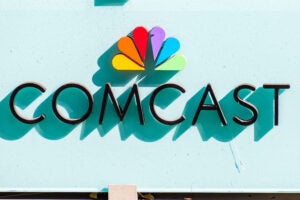 “Brand Aware” is a column on the data-driven digital ad ecosystem from the marketer’s point of view. It is written by Bob Arnold, director of digital and social media at Kellogg Company.
“Brand Aware” is a column on the data-driven digital ad ecosystem from the marketer’s point of view. It is written by Bob Arnold, director of digital and social media at Kellogg Company.
This Brand Aware column aspires to narrow the knowledge and understanding gap between advertisers and ad-tech companies to ultimately grow the ad-tech space.
Today’s column aims to help advertisers conquer the ad-tech space by offering a framework for marketers with a brand awareness objective.
From a marketer or client perspective, the programmatic space is very complicated. Ad-tech companies seem to have very similar pitches so it’s difficult to know how to best move forward. This challenge led us to create this framework for programmatic buying at Kellogg, where it has yielded strong returns on investment to date.
1. Develop A Strong Media Strategy
Programmatic is simply a media-buying tactic, not a strategy. It should be part of an overall marketing vision and strategy that centers on using data and optimizations to win in the marketplace. It seems that every day a new ad technology or data source emerges, making it easy to get lost in the vast sea of “shiny objects” and day-to-day execution if you don’t have a clear media vision and strategy. This slows any forward progress.
2. Scale Innovation And Operations Via Centralization
For many companies with multiple brands, marketing is often decentralized, with each brand acting independently and autonomously. This makes a lot of sense as each brand has a unique equity, consumer target and objectives. That said, this model can make it difficult to scale innovation and wring out operational inefficiencies because it’s difficult to dedicate time for “marketing thought leadership,” transfer innovation knowledge and eliminate unnecessary operations. Programmatic execution is labor-intensive and the space is constantly evolving, so it’s nearly impossible for a single brand manager to independently execute. Centralizing marketing innovation and operations enables faster creation of companywide advances, executional efficiencies and cross-fertilization between independently minded brands.
3. Ensure Strong Creative
It is paramount to have strong creative to win. At the end of the day, the media buy is only as strong as the creative execution. Strong creative gives a campaign the opportunity to succeed, while weak creative guarantees the campaign is dead on arrival. Utilizing simple creative testing makes it easy to ensure only strong creative appears in the marketplace. Yet we’ve all seen and ignored online ads because the creative quality was weak. Before investing into programmatic buying or wading too deeply into media strategy, I strongly recommend ensuring the creative has the right to succeed.
4. Enable Robust Analytics
AdExchanger Daily
Get our editors’ roundup delivered to your inbox every weekday.
Daily Roundup
My definition of programmatic is using data and algorithms to automate the planning and buying of media to maximize a campaign’s success. Assuming you agree, it’s clear that the ability to continuously improve the campaign is vital. Without strong analytics, it is impossible to understand how the campaign is performing, making it impossible for continuous improvement. The good and bad news here is that digital analytics has improved exponentially over the last few years. Unfortunately, it’s difficult to know which digital analytics tools truly add value, and proving viability is a labor-intensive, time-consuming process.
Hopefully, this column is a good thought starter for brands that are considering programmatic buying for their marketing campaigns. As more brand marketers enter the space we will see increased investment in ad tech and exponential improvements in digital marketing capabilities for the industry.
Follow Bob Arnold (@bobbyarnold) and AdExchanger (@adexchanger) on Twitter.













